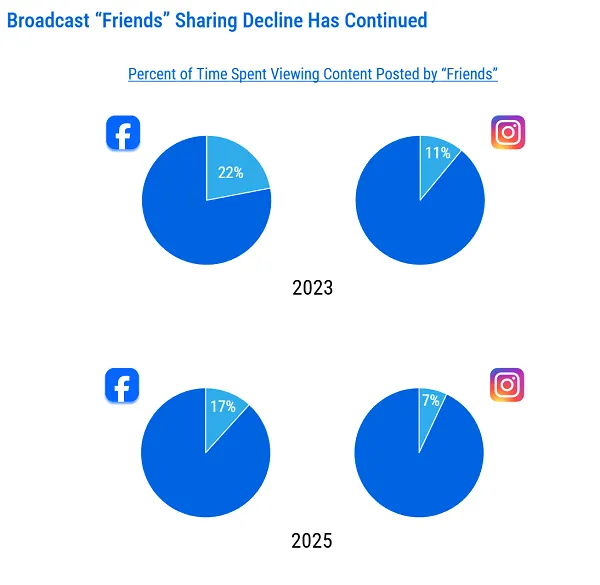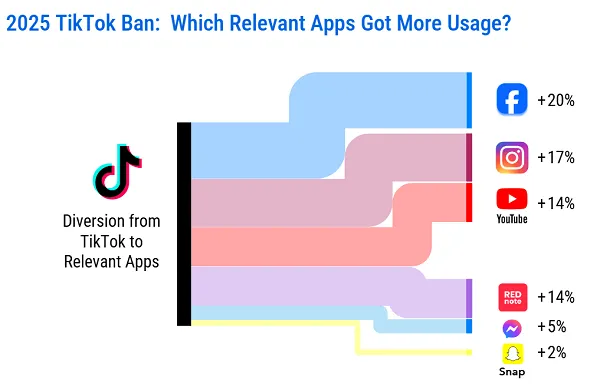Meta’s ongoing court docket battle in opposition to the FTC, which may lead to Meta being compelled to promote Instagram and WhatsApp because of anti-competitive issues, has seen the corporate reveal a variety of insights, as a part of its broader effort to focus on that it doesn’t maintain a monopoly share of the digital adverts market, and that there are, in actual fact, vital rivals difficult Meta’s perceived dominance on this area.
And whereas a variety of that is circumstantial, and never notably illustrative in a common sense, there are some fascinating knowledge notes which have been introduced within the trial which may give advertisers some extra perspective on key social media utilization developments, and higher inform their methods.
Right here’s an outline of a number of the graphs and stats which have been introduced within the case.
First off, for those who had been nonetheless unclear, video is the give attention to Fb:
As you may see, increasingly more individuals are spending increasingly more time watching video on Fb.
And Reels particularly have been the large winner over time:

As proven right here, common Fb Information Feed engagement has dipped, and Fb Tales have by no means actually caught on, however Reels continues to rise, as Meta pushes increasingly more of them in entrance of its viewers.
Which might be no large shock. Meta has credited its shift to an algorithm-defined feed of advisable Reels for rising engagement on each Fb and IG, and as a common consumer, you’ve little question develop into accustomed to the fixed stream of movies in every app.
However that is additionally value noting from a utilization developments perspective, and understanding what folks come to Fb and Instagram for nowadays.
In its opening assertion, Meta additionally famous that 63x extra messages are despatched in its apps day-after-day, versus public posts, additional reiterating the broader shift in the direction of video for leisure, and messaging for connection.
Public posting is solely not a serious ingredient of Fb or IG anymore.

So what does that imply for entrepreneurs?
Nicely, if individuals are being entertained in these apps, then getting your adverts in entrance of them remains to be more likely to be simply as efficient because it was when the main target was on good friend sharing. However it’s value noting that actual engagement occurs in DMs, and as such, DMs might now supply a greater pathway to facilitating transactional connection.
Which is why Meta’s Click on-to-Message adverts have seen an increase in curiosity of late.
It is also why the platforms are making creators an even bigger focus, as a result of common customers aren’t posting anyway. If social apps need to hold folks coming again, they should give attention to what incentivizes creators to submit, in an effort to hold their content material streams flowing.
When it comes to what content material particularly, video is clearly the place it’s at, and for those who’re not creating video content material, you need to undoubtedly be contemplating it.
Meta additionally shared insights into which apps benefited most when TikTok was briefly banned within the U.S.

So if TikTok is ultimately kicked out of America, because of the “Defending People from Overseas Adversary Managed Purposes Act,” you may doubtless anticipate Fb, Instagram, and YouTube to scoop up most of that visitors.
Meta’s additionally famous the rising similarity between apps, with each platform copycatting one another.

Once more, no surprises right here, however it’s fascinating to notice the gradual convergence of options, and the dearth of differentiation between platforms consequently.
These are simply a number of the revelations from the Meta FTC trial, offering a uncommon glimpse into the precise working knowledge from inside Meta HQ.
When you had been seeking to get a greater understanding of broader social media developments, these will do it.




